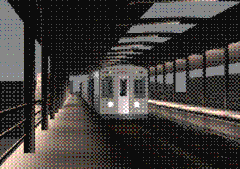Input Interfacing to the CAVE™ by Persons with Disabilities
June 1st, 1994
Categories: Devices, Human Factors, Industrial VR, Software

Authors
Browning, D., Cruz-Neira, C., Sandin, D., DeFanti, T., Edel, J.About
Common VR systems use head mounted displays that require duplicating user input devices in virtual space for interactive environments.
A major advantage of projection based VR systems such as the CAVE™ is the ability of the user to see his / her own body and real objects in a virtual environment. This paper describes the development of specialized interfaces for virtual environment exploration by people who use wheelchairs. These real, tangible interfaces are intuitive and most appropriate for wheelchair simulations. Examples of these are interfaces that match the user’s wheelchair dynamics for joystick or tiller operated electric wheelchairs.
The importance of this research is in applications where proposed constructed environments are analyzed by users of wheelchairs. Additional applications include wheelchair mobility training and wheelchair controller design.
Resources
URL
Citation
Browning, D., Cruz-Neira, C., Sandin, D., DeFanti, T., Edel, J., Input Interfacing to the CAVE™ by Persons with Disabilities, Proceedings of the Second Annual International Conference, Virtual Reality and People with Disabilities, June 1st, 1994. http://www.evl.uic.edu/drew/sun94f.htm